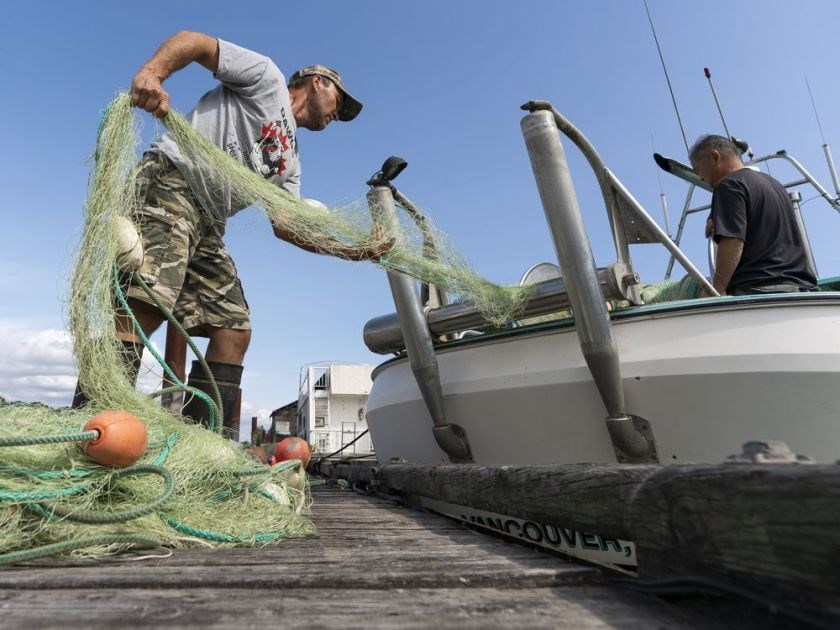VANCOUVER — The Fraser River will open in the coming week for its first sockeye salmon run of the season, in a year that is expected to bring in millions of fish for the first time in four years.
“Oh, we’re super-excited,” said Richmond fisherman Roy Jantunen, hours after learning the Pacific Salmon Commission had announced a 24-hour opening for gill nets from 7 a.m. on Wednesday.
Jantunen is preparing to go flat out for that full day, without any sleep, to maximize his catch.
“It’s great news,” he said. “Last week, we were pulling out the nets and getting them ready. We haven’t used these nets in four years.”
In its regular Friday report, the Pacific Salmon Commission also announced a new salt-water opening, to start on Monday, one minute after midnight until further notice.
This year’s run is estimated to bring between 8.4 million to 23 million fish, said Mike Lapointe, chief biologist with the commission.
The exact numbers are unknown until the fish return to their spawning grounds in the Fraser River and its tributaries, he said.
But salmon historically have returned in high numbers every four years.
In 2014, 20 million fish made the return trip.
Not all the fish will make it, but even if only one in 10 survive, the numbers expected this year will still surpass the total number of salmon that completed the journey of the three previous years combined, Lapointe said.
However, the commission said the higher-than-average temperatures in the Fraser — the recent heat wave has heated the waters to 20.7 C, which is 2.7 degrees above normal — could lead to higher mortality rates for fish this year.
Lapointe said the sockeye are racing against time to return to their spawning grounds, where they will die even if they make it, and they’re doing it while swimming a long distance, upstream, while eating little or nothing along the way.
“Three degrees above average is significant and not good for migrating fish” because there’s less oxygen in the warmer water and the sockeye are more prone to disease, he said.
“It’s like running the equivalent of a marathon every day and those three degrees make a big difference,” just like it would for a human running a marathon in the heat.
The commission releases a report every Tuesday and Friday and bases the openings for commercial, Indigenous and sport fisheries on actual counts of sockeye.
The longer runs are expected later this month, to continue through September.
One of the most spectacular sites of salmon, including sockeye, spawning is in the Adams River in the Shuswap, which is celebrated with the Salute to the Sockeye Festival, which runs Sept. 28 to Oct. 21 at the Tsútswecw Provincial Park (formerly Roderick Haig-Brown Provincial Park).
The recreational salmon fishing season opens Aug. 7, with limits of between two and four a day, depending on where they’re caught.
Rodney Hsu of the website fishingwithrod.com said sport fishers are looking forward to the Fraser opening, with the anticipated large run this year.
He said fishers should quit for the day after catching their two sockeye from the Fraser River, and not fish for sport and catch and release.



